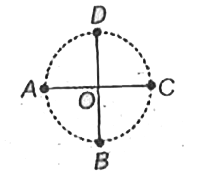A particle of mass M is dropped vertically into a medium that offers resistance proportional to the velocity of the particle. The buoyancy of the medium is negligible and the resisting force is f0 when the velocity is 1ms−1. What uniform velocity will the particle finally acquire ?
Step by step video & image solution for A particle of mass M is dropped vertically into a medium that offers resistance proportional to the velocity of the particle. The buoyancy of the medium is negligible and the resisting force is f_(0) when the velocity is 1 ms^(-1). What uniform velocity will the particle finally acquire ? by Physics experts to help you in doubts & scoring excellent marks in Class 11 exams.
Updated on:21/07/2023Topper's Solved these Questions
- FRICTION, WORK POWER AND ENERGYBOOK - NN GHOSHCHAPTER - FRICTION, WORK POWER AND ENERGYEXERCISE - Exercises (A)
15 Videos
- FRICTION, WORK POWER AND ENERGYBOOK - NN GHOSHCHAPTER - FRICTION, WORK POWER AND ENERGYEXERCISE - Exercises (B)
36 Videos
- FIRST LAW OF THERMODYNAMICSBOOK - NN GHOSHCHAPTER - FIRST LAW OF THERMODYNAMICSEXERCISE - All Questions
39 Videos
- GRAVITATIONBOOK - NN GHOSHCHAPTER - GRAVITATIONEXERCISE - EXERCISE
29 Videos
Similar Questions
A particle of mass M is dropped vertically into a medium that offers resistance proportional to the velocity of the particle. The buoyancy of the medium is negligible, and the resisting force per unit velocity is f. What uniform velocity will the particle finally attain ?
View SolutionA particle of mass m1 moves with velocity v1 and collides with another particle at rest of equal mass. The velocity of the second particle after the elastic collision is
View Solution
Knowledge Check
An oil drop of mass m and falls through a medium that offers a viscous drag force. F. if the velocity of the drop is constant it means that
AF>mgBF<mgCF>mgDF=mgA particle falls in a medium whose resistance is propotional to the square of the velocity of the particles. If the differential equation of the free fall is dvdt=g−kv2 (k is constant) then
Av=2√gke2t√g/t+1e2r√g/k−1Bv=√gke2t√gk−1e2t√gk+1Cv→0 as t→∞Dv→√gk as t→∞If a wave propagates through a medium. Then, the velocity of particle of medium is given by
Awave velocity × strainBwave velocitystrainCwave velocityDangular frequencypropagation constant
Deduce an expression for the velocity of a particle executing S.H.M. When is the particle velocity minimum?
View SolutionThe escape velocity of a particle of mass m varies as :
View SolutionA particle of mass 1mg has the same wavelength as an electron moving with a velocity of 3×106ms−1. The velocity of the particle is
View SolutionIf a particle moves such that the displacement is proportional to the square of the velocity acquired, then it acceleration is
View SolutionAs shown in figure, a particle of mass m is performing vertical circular motion. The velocity of the particle is increased, then at which point will the string break?

View Solution
